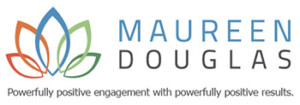So I went to a hockey game and a public meeting broke out. Sorry — I had to.
Following up on last week’s blog, I attended a public meeting in Pemberton last Thursday to learn more about the potential community-owned independent “run of river” power project on Pemberton Creek. While this “CPP” as it is more commonly known, had been a very quiet concept for several years, it recently grew into a contentious issue. This was triggered by the Village of Pemberton’s call for Requests for Expressions of Interest (RFEI), inviting independent power plant operators to submit a proposal outlining their interest in this particular project.
The RFEI came a surprise to many community members. The CPP concept hadn’t been on most people’s radar, when suddenly an RFEI appeared in the local newspapers, inviting independent power companies to, what some locals perceived as, “stake their claim” to one of Pemberton’s most important water channels. Anger ensued —the kind that has time to fester.
The meeting was the community’s first opportunity to review power project concepts and ask questions of the municipal government. The first time. People arrived angry and cynical. They were civil — we’re Canadian after all — but they were definitely angry, fuelled further by the appearance that the meeting was structured in such a way as to not allow open discussion or meaningful questions from the floor.
Participants were asked to review four options:
1) a community power project
2) an independently owned power project
3) a recreation option featuring trail upgrades, a viewing platform and other features that would appeal to residents and visitors
4) an option that leaves Pemberton Creek exactly as it is — do nothing
The range of options surprised people. And the option to do nothing reduced the hostility somewhat. But the process was already tainted.
I has a quick one-on-one chat with a senior staffer and in under five minutes he explained the complexity of the process and why the Village had conducted it the way they did. This should have been explained to all 200 people in the room. Instead, attendees worked their way through a tense and curt “Us vs. Them” public meeting that gave them an opportunity to “dot vote” for or against the options. They were clearly, almost unanimously, against any power projects.
But the meeting could have been so much better. The Village could have acknowledged the tension and the timing challenges of the process. They could have asked for everyone’s patience and open minds as they conveyed the process. But, they didn’t. So folks explored options without context and were unsure if their participation had any impact.
No one was rude or inappropriate or exceedingly adversarial, but no one left feeling confident in the process either. It could have been so much more.
Every public engagement exercise has the potential to inform, engage and even inspire your audience. When you demonstrate respect for your audience by being honest and transparent, you can work through difficult issues in collaboration rather than conflict. When public meeting hosts realize that working as “WE” is much more effective than perpetuating “Us vs. Them”, then WE will all experience successful public engagement.
~ Maureen Douglas, CPF-IAF. Mo writes, consults and speaks about the power of positive public, workplace and team engagement. Click here for Mo’s FREE e-Guide to Better Public Engagement. Follow her on Twitter.

